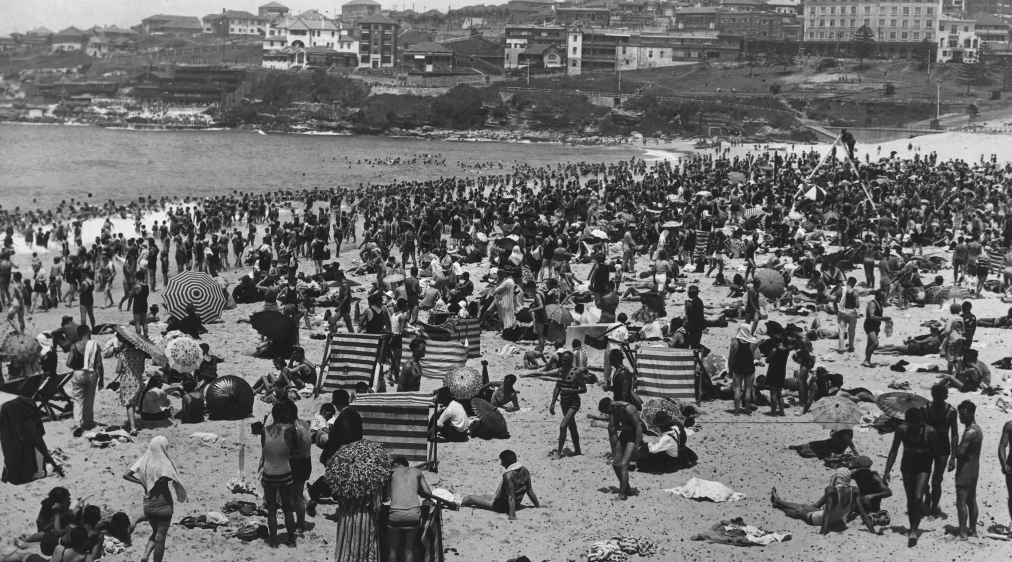Australia's heatwaves: the scorching past and present
Intense heatwaves across far southern areas of Australia are no longer rare occurrences; they are becoming defining features of Australian summers, searing the land and leaving an indelible mark on the nation's memory. As another widespread heatwave approaches, large areas of the country brace for intense heat. As anticipated here and here, Adelaide, Melbourne, and western Sydney are bracing for temperatures in the low 40s, while Canberra is set to reach the upper 30s in the coming days. These sweltering conditions evoke memories of historic heatwaves that have tested Australia's resilience and reshaped what it means to experience an Australian summer.
Historic infernos: lessons from the past
Australia's history is rich with tales of heatwaves that left indelible marks. The 1939 heatwave, peaking with Sydney Basin's record-breaking 47.8°C, forced residents to seek relief by sleeping outdoors, as the oppressive heat made indoor conditions unbearable. With air-conditioning not yet widely available—residential cooling systems were still years away—people had no choice but to endure the extreme temperatures through alternative means, such as using fans or escaping to cooler outdoor spaces. The heatwave highlighted the vulnerability of the city and much of the country to extreme weather events, leaving a lasting imprint on the national memory.

Bondi Beach, 1939's heatwave. Source SMH.
In February 2009, Melbourne experienced its hottest days on record, with temperatures soaring to 46.4°C. The extreme heat, combined with low humidity and strong winds, created ideal conditions for the catastrophic Black Saturday bushfires which devastated large areas of Victoria, including communities near Melbourne. By the time the fires were contained, 173 lives had been tragically lost, making it one of the deadliest fire events in Australian history.
In January 2019, Adelaide recorded its highest-ever temperature of 46.6°C. This extreme heat caused widespread disruption, with temperatures soaring even higher into the low 50s in areas further north, such as Port Augusta. The intense heat led to the softening and buckling of roads, creating traffic delays and hazardous driving conditions. Infrastructure also suffered, as power grids and rail lines faced significant strain. Public transport was impacted, with the city's infrastructure struggling to cope under the overwhelming heat, underscoring the vulnerability of urban areas to such extreme weather events.

- Port Augusta: some roads showed signs of bleeding. (Facebook: Port Augusta City Council).
When heat affects mood and mind
The oppressive weight of extreme heat does more than exhaust the body—it takes a toll on the mind and mood. High temperatures above 35°C can impair cognitive function, reducing focus, memory, and decision-making abilities. Studies highlight a 20–30% decline in productivity during heatwaves. Emotions simmer too, with irritability, stress, and even aggression becoming more common. It's not just the thermometer that rises—so does tension, as people grapple with discomfort and frayed nerves.
Cities as heat traps: the urban heat island effect
Urban areas amplify the misery of heatwaves due to the urban heat island effect. This effect occurs because cities, built with materials like asphalt, concrete, and metal, absorb and trap heat more effectively than natural landscapes such as forests or open fields. As a result, temperatures in urban areas can be several degrees higher—sometimes up to 8°C—than in surrounding rural areas. This creates a more intense heat, increasing the risks of heat stress for both human health and infrastructure.
Past extreme heatwaves serve as stark reminders as Australia braces for a hot period ahead. While temperatures in Melbourne, Adelaide, Western Sydney, and Canberra may be far from past record highs, the mix of heat, dry conditions, and gusty winds in the days ahead still presents serious risks. These conditions highlight the potential for heat-driven catastrophes like bushfires, underlining the nation's vulnerability. Stay up to date with heat warnings and fire danger alerts to ensure safety during this period.